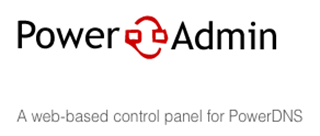
In this tutorial, we will show you how to install Poweradmin on CentOS 6. For those of you who didn’t know, Poweradmin is a friendly web-based DNS administration tool for Bert Hubert’s PowerDNS server. The interface has full support for most of the features of PowerDNS. Poweradmin allows us to easily define Zone files and record types. This version of Poweradmin is an adaptation of the Poweradmin that was written by Jorn Ekkelenkamp and Roeland Nieuwenhuis a long time ago. The current version has been extended with numerous features that were missing in the original code and has considerable performance improvements.
This article assumes you have at least basic knowledge of Linux, know how to use the shell, and most importantly, you host your site on your own VPS. The installation is quite simple. I will show you the step-by-step installation of Poweradmin on CentOS 6.
Prerequisites
- A server running one of the following operating systems: CentOS 6.
- It’s recommended that you use a fresh OS install to prevent any potential issues.
- SSH access to the server (or just open Terminal if you’re on a desktop).
- A
non-root sudo useror access to theroot user. We recommend acting as anon-root sudo user, however, as you can harm your system if you’re not careful when acting as the root.
Install Poweradmin on CentOS 6
Step 1. First, make sure you have installed PowerDNS on your system.
Step 2. Enable EPEL repository on your system.
## RHEL/CentOS 6 64-Bit ## # wget http://download.fedoraproject.org/pub/epel/6/x86_64/epel-release-6-8.noarch.rpm # rpm -ivh epel-release-6-8.noarch.rpm
## RHEL/CentOS 6 32-Bit ## # wget http://download.fedoraproject.org/pub/epel/6/i386/epel-release-6-8.noarch.rpm # rpm -ivh epel-release-6-8.noarch.rpm
Step 3. Install and configure PHP and Nginx.
yum install nginx php-fpm php-cli php-mysqlnd php-mcrypt
Change PHP-FPM to listen on a Unix socket, open the default www pool:
##nano /etc/php-fpm.d/www.conf
listen = 127.0.0.1:9000 to listen = /var/run/php-fpm/php-fpm.socket
Restart the service for changes to take effect:
service php-fpm restart
Create a PHP session directory and change the ownership to apache:
mkdir /var/lib/php/session chown apache:apache /var/lib/php/session
Create a new Nginx virtual host with the following content:
nano /etc/nginx/conf.d/pdns.your-domain.com.conf
server {
server_name pdns.your-domain.com;
listen 80;
root /var/www/html/pdns.your-domain.com;
access_log /var/log/nginx/pdns.your-domain.com-access.log;
error_log /var/log/nginx/pdns.your-domain.com-error.log;
index index.php;
location / {
try_files $uri $uri/ /index.php?$query_string;
}
location ~ \.php$ {
fastcgi_index index.php;
fastcgi_split_path_info ^(.+\.php)(.*)$;
fastcgi_keep_conn on;
include /etc/nginx/fastcgi_params;
fastcgi_pass unix:/var/run/php-fpm/php-fpm.socket;
fastcgi_param SCRIPT_FILENAME $document_root$fastcgi_script_name;
}
location ~ /\.ht {
deny all;
}
}
Restart Nginx by running the following commands:
service nginx restart
Step 4. Install Poweradmin.
Download the latest version of Poweradmin:
mkdir -p /var/www/html/pdns.your-domain.com/ cd /var/www/html/pdns.your-domain.com/ wget http://downloads.sourceforge.net/project/poweradmin/poweradmin-2.1.7.tgz tar -xvzf poweradmin-2.1.7.tgz mv poweradmin-2.1.7/* . rm -rf poweradmin-2.1.7*
Set the correct permissions:
chown -R apache:apache /var/www/html/pdns.your-domain.com/
Step 5. Accessing Poweradmin.
Poweradmin will be available on HTTP port 80 by default. Open your favorite browser and navigate to http://pdns.your-domain.com/installer or http://server-ip/installer.
Step by step guide start the installation wizard:
- Select the desired language.
- Just click on the “Go to step 3″ button
- Fill the database information fields, select “MySQL” for Database type and “localhost” for the “Hostname” and set the Poweradmin administrator password.
- Set the username and password for Poweradmin, Hostmaster, and Primary and Secondary nameservers.
- Before going to the next step to create a less privileged user Poweradmin, perform the MariaDB command shown on the screen.
- If you have set the correct permissions the installer will create your Poweradmin PHP configuration file.
Congratulations! You have successfully installed Poweradmin. Thanks for using this tutorial for installing Poweradmin web-based control panel for PowerDNS on CentOS 6 system.